 As I mentioned previously, the main sources of anxiety in the brain are two neural pathways that can initiate an anxiety response. The cortex pathway is the one most people think of when they consider the causes of anxiety. The cortex is the pathway of sensations, thoughts, logic, imagination, intuition, conscious memory, and planning. Anxiety treatment typically targets this pathway, probably because it’s a more conscious pathway, meaning that we tend to be more aware of what’s happening in this pathway and have more access to what this part of the brain is remembering and focusing on. If you find that your thoughts keep turning to ideas or images that increase your anxiety, or that you obsess over doubts, become preoccupied with worries, or get stuck in trying to think of solutions to problems, you’re probably experiencing cortex-based anxiety.
As I mentioned previously, the main sources of anxiety in the brain are two neural pathways that can initiate an anxiety response. The cortex pathway is the one most people think of when they consider the causes of anxiety. The cortex is the pathway of sensations, thoughts, logic, imagination, intuition, conscious memory, and planning. Anxiety treatment typically targets this pathway, probably because it’s a more conscious pathway, meaning that we tend to be more aware of what’s happening in this pathway and have more access to what this part of the brain is remembering and focusing on. If you find that your thoughts keep turning to ideas or images that increase your anxiety, or that you obsess over doubts, become preoccupied with worries, or get stuck in trying to think of solutions to problems, you’re probably experiencing cortex-based anxiety.
The amygdala pathway, on the other hand, can create the powerful physical effects that anxiety has on the body. The amygdala’s numerous connections to other parts of the brain allow it to mobilize a variety of bodily reactions very quickly. In less than a tenth of a second, the amygdala can provide a surge of adrenaline, increase blood pressure and heart rate, create muscle tension, and more. The amygdala pathway doesn’t produce thoughts that you’re aware of, and it operates more quickly than the cortex can. Therefore, it creates many aspects of an anxiety response without your conscious knowledge or control. If you feel like your anxiety has no apparent cause and doesn’t make logical sense, you’re usually experiencing the effects of anxiety arising from the amygdala pathway. Your awareness of the amygdala is likely to be based on your experience of its effects on you—namely bodily changes, nervousness, wanting to avoid a certain situation, or having aggressive impulses.
Therapists often don’t discuss the amygdala when treating anxiety disorders, which is surprising, given that most experiences of fear, anxiety, or panic arise due to involvement of the amygdala. Even when the cortex is the source of anxious thinking, it’s the amygdala that causes the physical sensations of anxiety to occur: pounding heart, perspiration, muscle tension, and so on. However, when family doctors and psychiatrists are prescribing medications to reduce anxiety, they’re often focused on the amygdala, even though they may not mention it by name. These medications, such as Xanax (alprazolam), Ativan (lorazepam), and Klonopin (clonazepam), often have the effect of sedating the amygdala.
Such tranquilizing medications are very effective at quickly reducing anxiety. Unfortunately, they do nothing to change the circuitry of the amygdala. So while they reduce the anxiety response, they don’t help change the amygdala in ways that would be beneficial in the long term. Some of the strategies we will be working on together in therapy however will help you to do this.
Identifying the Basis of Your Anxiety: Amygdala, Cortex, or Both?
Anxiety is a complex response that, in most cases, involves a variety of areas of the brain. While the amygdala and cortex both play a role, it’s helpful to know where your own anxiety begins. This determines which strategies will be most helpful in reducing it. Completing the questionnaire below, will help us to assess whether your anxiety is cortex-based, amygdala-based, or both. You’ll also learn more about how your anxious thoughts and reactions affect you and your life.
As you may be starting to realise, even though the amygdala is the neurological source of the anxiety response, creating the physical sensations of anxiety and often overriding cortex-based thought processes, anxiety doesn’t always begin in the amygdala. It can also begin in the cortex, with thoughts and mental images activating the amygdala. If you become anxious when you see a growling dog and begin to hyperventilate, that would be amygdala-initiated anxiety. If you’re pacing nervously as you anticipate an important phone call, that would be cortex-initiated anxiety. Understanding where and how your anxiety begins will allow you to take the most effective approach to interrupting the process.
It’s important to remember that when anxiety begins in the amygdala, cortex-based interventions, such as logic and reasoning, don’t always help reduce anxiety. Amygdala-based anxiety can often be identified by certain characteristics; for example, it seems to come from out of the blue, it creates strong physiological responses, and it seems out of proportion to the situation. When anxiety starts in the amygdala, you need to use the language of the amygdala to modify it. Amygdala-initiated anxiety is most effectively reduced by the interventions we can explore and work on together in therapy such as relaxation techniques, mindfulness, self-compassion strategies, breathing exercises, healthy distraction, and the role of physical movement and exercise.
If, on the other hand, you know that your anxiety began in the cortex, the more effective approach is to change your thoughts and images to decrease the resulting amygdala activation. This is also something we can work on together.
So let’s do an informal assessments that will help you evaluate and describe your typical anxiety responses to assist you in determining where your anxiety originates.
CORTEX-BASED ANXIETY
We’ll start by addressing anxiety initiated by circuitry in the cortex. Certain types of activation in the cortex, often experienced as thoughts or images, can eventually cause the amygdala to activate the stress response, along with all of its unpleasant symptoms. The varieties of cortex-based activation are numerous, but they all have the same potential consequence: putting you at risk for experiencing anxiety. The following assessments will provide more insight into some of the most common ways the cortex pathway can initiate anxiety and will help you identify which ones you experience.
Typically, people don’t pay close attention to the specific thoughts and images occurring in their cortex, so it is essential that you become more watchful and aware of what’s happening in your cortex at any given moment. By learning to recognize different types of anxiety-provoking cortex activities, you can modify them before they escalate into full-blown anxiety. We’ll explain how to do so in part 3 of the book.
Questionnaire: Assessing Left Hemisphere-Based Anxiety
The left hemisphere of the cortex can produce a type of anxious apprehension that shows up as a tendency to worry about what will happen and search repetitively for solutions. With this type of anxiety, people tend to ruminate or focus intensely on a situation or feel the need to discuss a situation repeatedly.
Read through the examples below and check those that describe you:
_ I rehearse potential problem situations in my mind, considering various ways things could go wrong and how I’ll react.
_ I often think about situations from the past and consider ways they could have gone better.
_ I tend to get stuck in the process of considering different ways I could talk to someone about concerns or other topics.
_ Sometimes I just can’t turn off a stream of negative thinking, and it often prevents me from sleeping.
_ I find it comforting to consider a problem from a number of different perspectives.
_ I feel much better when I have a solution for a possible difficulty, just in case the situation arises.
_ I know I tend to dwell on difficulties, but it’s just because I’m trying to find explanations for them.
_ I have difficulty getting myself to stop thinking about things that make me anxious.
If you checked several of the items above, you may be spending too much time focusing on distressing situations and bringing to mind thoughts that increase your level of anxiety. Although your left hemisphere may be looking for a solution, a strong focus on potential difficulties can activate the amygdala. You may be missing many opportunities for anxiety-free moments by thinking about problems that might never occur.
The left hemisphere provides us with some of our most complex and highly developed abilities, and we humans couldn’t have created the technologically sophisticated world we live in without its contributions. But the worry and rumination it creates don’t provide the solution to anxiety. In therapy, we’ll take a closer look at various ways the left hemisphere contributes to anxiety. We’ll help you identify specific kinds of thought processes that lead to anxiety, such as pessimism, worry, obsessions, perfectionism, catastrophizing, and guilt and shame, and explain how you can change these thought processes.
Questionnaire: Assessing Right Hemisphere-Based Anxiety
The right hemisphere of the cortex allows you to use your imagination to visualize events that aren’t actually occurring. Imagining distressing situations can activate the amygdala. The right hemisphere’s focus on nonverbal aspects of human interactions, such as facial expressions, tone of voice, or body language, may cause you to jump to conclusions about this information. For example, it’s easy to make too much of a facial expression or a gesture and assume someone is angry or disappointed.
Read through the statements below and check any that you experience often:
_ I picture potential problem situations in my mind, imagining various ways things could go wrong and how others will react.
_ I’m very attuned to the tone of people’s voices.
_ I can almost always imagine several scenarios that illustrate how a situation could turn out badly for me.
_ I tend to imagine ways that people will criticize or reject me.
_ I often imagine ways that I might embarrass myself.
_ I sometimes see images of terrible events occurring.
_ I rely on my intuition to know what others are feeling and thinking.
_ I’m watchful of people’s body language and pick up on subtle cues.
If you checked many of the statements above, your anxiety may be increased by a tendency to imagine frightening scenarios or rely on intuitive interpretations of people’s thoughts that may not be accurate. These right hemisphere-based processes can cause your amygdala to respond as if you’re in a dangerous situation when no threat exists. A variety of strategies, including play, exercise, meditation, and imagery can be useful for increasing activation of the left hemisphere, producing positive emotions, and quieting the right hemisphere. Again, this is something we can work on in our sessions together.
Questionnaire: Identifying Anxiety That Arises from Interpretations
Very often the interpretation of events, situations, and other people’s responses can lead to anxiety. When this occurs, a person’s cortex is creating unnecessary anxiety. The anxiety is being produced not by the situation, but by the way the cortex is interpreting the situation.
To determine if your cortex has a tendency to turn neutral situations into sources of anxiety, read through the list below and check any items that apply to you:
_ I have a tendency to expect the worst.
_ I think I take people’s comments too personally.
_ I have trouble accepting the fact that I make mistakes, and I beat myself up when I do.
_ I have a hard time saying no because I don’t like to disappoint people.
_ When I have a setback, I find it overwhelming and feel like giving up.
_ When I have trouble finding something, I worry that I’ll never find it.
_ I tend to focus on any flaws in my appearance.
_ When someone makes a suggestion, I can’t help but consider it a criticism.
If you checked many of the statements in the list above, the interpretations provided by your cortex are probably increasing your anxiety. Many people believe that certain situations are the cause of their anxiety, but anxiety always begins in the brain, not with the situation. Anxiety is a human emotion, produced by the human brain, and emotions are caused by the brain’s reaction to situations, not the situations themselves. People have different reactions to the same event because of their differing interpretations. For example, seeing a wolf in the woods may terrify a camper but fascinate a zoologist. How your cortex interprets events can obviously have a strong impact on how much anxiety you experience. In chapters 10 and 11, you’ll learn how to resist anxiety-producing interpretations.
Questionnaire: Assessing Your Anxiety Based in Anticipation
When you anticipate, you’re using your cortex to think about or imagine future events. If those future events have the potential to be negative, anticipation can serve to increase anxiety. As with left hemisphere-based anxiety, this can lead to anxiety about things that might not ever occur. And even if the event does come to pass, you may start dwelling on it long before it occurs or you need to be concerned about it. So instead of experiencing the event just once, you experience it repeatedly before it ever occurs.
Here are some statements that reflect a tendency to anticipate. Read through the list and check any that apply to you:
_ If I know a potential conflict is looming, I spend a lot of time considering it.
_ I think about things that people might say that would upset me.
_ I can almost always think of several ways that a situation could turn out badly for me.
_ When I know that something might go wrong, it’s constantly on my mind.
_ I can be worried sick about something months before it occurs.
_ If I’m going to have to perform or speak in front of a group, I can’t stop thinking about it.
_ If there’s a potential for danger or illness, I feel like I need to consider it.
_ I often waste time thinking of solutions for problems that never occur.
If you have a tendency to anticipate negative events, you’re creating more anxiety in your life than is necessary. Keep in mind that, while everyone experiences difficult situations in life, there’s no need to live through these events in the cortex when nothing negative is occurring. We’ll cover strategies for modifying your thoughts in chapter 11.
Questionnaire: Assessing Your Anxiety Based in Obsessions
When people have obsessions (repetitive, uncontrollable thoughts or doubts), perhaps accompanied by compulsions (activities or rituals performed in an effort to reduce anxiety), these behaviors arise in the cortex and are fueled by the anxiety of the amygdala. Obsessions, which are very much a product of the frontal lobe of the cortex, have been linked to excessive activation of the circuitry in the orbitofrontal cortex, an area just behind the eyes (Zurowski et al. 2012).
Read through the following statements, which reflect both obsessions and compulsions, and check any that apply to you:
_ I devote a great deal of thought to keeping things in order or doing tasks correctly.
_ I’m preoccupied with checking or arranging things until I believe they’re right.
_ I’m haunted by certain doubts that I can’t escape.
_ I have concerns about contamination and germs.
_ I have some thoughts that I find unacceptable.
_ I worry about acting on urges that come into my mind.
_ I get stuck on a certain idea, doubt, or thought and can’t get past it.
_ I have routines that I need to complete in order for things to
feel right.
If you checked several items, consider whether you’re spending a lot of your time focusing on thoughts or activities that keep you stuck in patterns that maintain your anxiety in the long run and rob you of precious time. Obsessive thoughts can occur without compulsive behaviors, but often compulsions form when a person finds that these behaviors provide temporary relief from anxiety. Unfortunately, even though the compulsions don’t help in the long run, they can be maintained by the amygdala because of the temporary relief from anxiety that follows them. Therefore, coping with obsessions and compulsions usually requires an approach that targets the amygdala as well as the cortex. We’ll discuss ways of dealing with cortex-based obsessions in our sessions, and look at exposure methods that combat amygdala-fueled compulsions too.
AMYGDALA-BASED ANXIETY
Now that you’ve identified cortex-based causes of your anxiety, we’ll help you assess your tendency toward amygdala-initiated anxiety. As a reminder, anytime you feel anxiety or fear, the amygdala is involved. However, the following assessments will help you zero in on experiences where your anxiety response originated in the amygdala. Once you know the starting point, you can choose approaches that will best control your anxiety. If the circuitry in the amygdala itself is what initiated your anxiety, strategies that target the cortex will be futile. In part 2 of the book, we’ll provide a number of techniques that are helpful for controlling amygdala-based anxiety, including relaxation strategies, exposure to feared objects or situations, engaging in physical activity, and improving your sleep patterns.
To determine whether the amygdala or the cortex initiated a specific anxiety response, you need to consider what was happening before you began to experience anxiety. If you were focusing on specific thoughts or images, that suggests your anxiety began in the cortex. If, on the other hand, you feel that a specific object, location, or situation immediately elicited an anxiety response, the amygdala is more likely to be the starting point.
Questionnaire: Assessing Your Experience of Unexplained Anxiety
When your anxiety seems unexplained or comes from out of the blue and you aren’t able to find any good reason for it, your amygdala is probably the cause. You might honestly say, “I just don’t know why I feel this way; it doesn’t make sense,” because none of your thoughts or current experiences justify the feeling. As we’ve noted, the amygdala often responds without your having any conscious awareness of what’s happening, and the responses it creates are often puzzling.
Read through the following statements, which reflect unexplained anxiety, and check any that apply to you:
_ Sometimes my heart pounds for no reason.
_ When I visit others, I frequently want to go home, even though things are going fine.
_ I often don’t feel in control of my emotional reactions.
_ I can’t explain why I react the way I do in many situations.
_ I have sudden rushes of anxiety that seem to come from out of nowhere.
_ I just don’t feel comfortable going to certain places, but I don’t have a good reason for feeling that way.
_ I frequently feel panicky with no warning.
_ I usually can’t identify the triggers of my anxiety.
As we’ve noted, you may not have access to the amygdala’s memories. As a result, when your amygdala reacts you may have no clue what it’s reacting to or why. The good news is, even when you don’t understand why your amygdala is responding, you can choose from a wide variety of techniques to help calm your amygdala and rewire it.
Questionnaire: Assessing Your Experience of Rapid Physiological Responding
When the amygdala is the source of your anxiety, you’re more likely to have noticeable physiological changes as one of the first signs of your anxiety. Before you have time to think or even fully process the situation, you may experience a pounding heart, sweating, and a dry mouth. Because the amygdala is strongly wired to energize the sympathetic nervous system, activate muscles, and release adrenaline into the bloodstream, having physiological symptoms as the first sign of anxiety is a good indicator that you’re dealing with amygdala-based anxiety.
Read through the following statements, which reflect rapid physiological responding, and check any that apply to you:
_ I find that my heart is racing even when there’s no obvious reason.
_ I can go from feeling calm to being in a complete panic in a matter of seconds.
_ I suddenly can’t get my breathing rhythm to feel right.
_ Sometimes I feel dizzy or as though I might faint, and these feelings arise quickly.
_ My stomach lurches and I feel nauseous right away.
_ I become aware of my heart because I have pain or discomfort in my chest.
_ I start sweating without exerting myself.
_ I have no idea what comes over me. I just start trembling without warning.
If you checked many of these statements, which reflect strong and rapid physiological responding, your anxiety may originate in reactivity of the amygdala. When you experience such responses, you may assume that an actual threat is present. But your amygdala could be reacting to a trigger that isn’t an accurate indicator of danger, so remember that a feeling of danger doesn’t necessarily indicate the presence of a threat. You can use these physiological responses as an indication that you should use the strategies suggested in part 2 of this book.
Questionnaire: Assessing Your Experience of Unplanned Aggressive Feelings or Behaviour
A tendency toward aggression is based on the fight element of the fight, flight, or freeze response. Whereas some people want to retreat and avoid conflicts or threatening situations, others tend to have aggressive responses. Suddenly feeling threatened can make them prone to anger and lashing out at others. This aggressive response, which has its roots in the protective nature of the amygdala, is especially characteristic of people with post-traumatic stress disorder.
Read through the following statements, which reflect unplanned aggressive feelings or behavior, and check any that apply to you:
_ I explode unexpectedly in certain situations.
_ I often need to do something physical to express my frustration.
_ I strike out and later realize that my response was too strong.
_ I snap at others with little warning.
_ I feel that I’m capable of hurting someone when I’m under stress.
_ I don’t want to lash out at people, but I can’t help it.
_ Family members and friends know to be cautious around me.
_ When I’ve been upset, I’ve broken or thrown objects.
If you checked several of these statements, which reflect a tendency to show signs of anxious aggression, the amygdala-based interventions in part 2 of the book will be helpful. Your amygdala’s attempts to activate an aggressive response can seem compelling, but you can exert control in how you direct your behaviour. Regular physical exercise can help curb this kind of responding, and taking a brisk walk to get out of a threatening situation can help satisfy the drive to take immediate action.
Questionnaire: Assessing Your Experience of Inability to Think Clearly
When you find yourself not just anxious but also unable to concentrate or direct the focus of your attention, this is a strong indicator of amygdala-based anxiety. When the amygdala steps in, it overrides the attentional control of the cortex and takes charge. When you experience this amygdala-based control of your brain, you’ll feel unable to control your thoughts. Remember, from an evolutionary standpoint the amygdala’s ability to seize control when it detects danger helped our distant ancestors survive. Therefore, the amygdala has retained this capacity. Still, it’s both disconcerting and frustrating to temporarily lose the ability to decide what to focus on or think about.
Read through the following statements, which reflect an inability to think clearly, and check any that apply to you:
_ When I’m under pressure, my mind goes blank and I can’t think.
_ I know that when I’m anxious, I’m unable to focus on what I need to do.
_ When I get nervous, sometimes I can’t concentrate very well.
_ When I’m being yelled at, I’m unable to come up with a response.
_ When I feel panicky, it’s often difficult for me to focus on what I need to do.
_ Even when I try to calm down, it’s hard for me to distract myself from how my body is feeling.
_ When I’m scared, sometimes I draw a total blank about what I should do next.
_ During a test, I often can’t remember what I’ve learned, even when I’m prepared.
If you checked several of these statements, you may frequently find yourself in situations where you have an inability to think. The connections from the amygdala to the cortex can influence how attention is directed, and evidence suggests that people who experience high levels of anxiety often have weaker connections from the cortex to the amygdala (Kim et al. 2011). Cortex-based strategies for coping with anxiety are often not very useful when the amygdala is activated. Some of the strategies discussed in part 2 of the book, such as deep breathing or relaxation, will be helpful even when your thought processes are limited by activation of the amygdala.
Questionnaire: Assessing Your Experience of Extreme Responses
If your responses often seem over-the-top and out of proportion to the situation at hand, your amygdala is probably behind this pattern of extreme responding. It may be taking over and acting to protect you from a danger that it perceives, but which you’d recognize, in a calmer moment, as not requiring such a strong response. One of the most intense types of extreme response is a panic attack (discussed further in chapter 5), but there are others. In all cases, these extreme responses are caused by activation of the fight, flight, or freeze response when it isn’t necessary. Remember, the amygdala’s approach to situations is typically “better safe than sorry,” and it’s programmed to react swiftly and strongly—even when it isn’t completely sure of the details involved in possible threats.
Read through the following statements, which reflect a pattern of extreme responses, and check any that apply to you:
_ At times, my anxiety is so strong that I’m afraid I’m going crazy.
_ I get paralyzed by the level of anxiety I experience.
_ Other people have told me they think I overreact.
_ When something is out of place or disorganized, I can’t tolerate it.
_ At times, I’ve wondered whether I’m having a heart attack or stroke.
_ Sometimes I just lose my temper and go into a rage.
_ Little things, like an insect or dirty dishes, can send me into a complete panic.
_ Sometimes things around me don’t seem real, and I fear I’m losing my mind.
If you checked several of these statements, you’re probably suffering from excessive amygdala activation. As we noted earlier in the book, some amygdalas are more reactive than others, even quite early in life. Unfortunately, children with reactive amygdalas don’t necessarily learn amygdala-based strategies for dealing with their anxiety, and the result is often entrenched patterns of overreacting or extreme avoidance. But as you’ve learned, it’s never too late for the amygdala to learn to respond differently.
After having worked through these questionnaires, you should have a better understanding of your tendency to experience cortex-based anxiety and determined whether specific thought processes are contributing to your anxiety. Similarly, your experiences of amygdala-based anxiety: unexplained anxiety, rapid physiological responding, unplanned aggressive feelings or behaviour, inability to think clearly, and extreme responses. Now that you have a better idea of where your anxiety originates—in your cortex, amygdala, or both—we’re ready to look more closely at the nature of each type of anxiety and learn techniques that will help you minimize or control your specific anxiety responses.
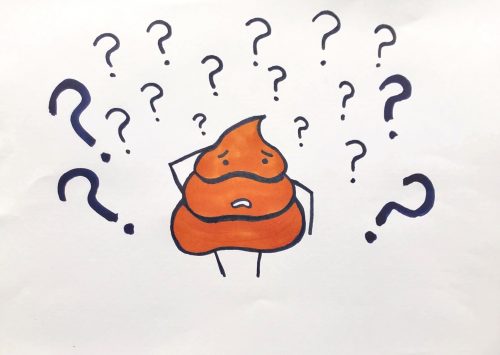

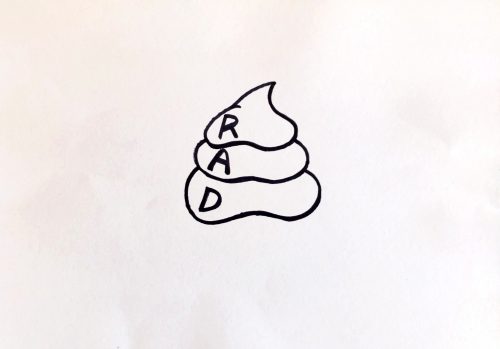
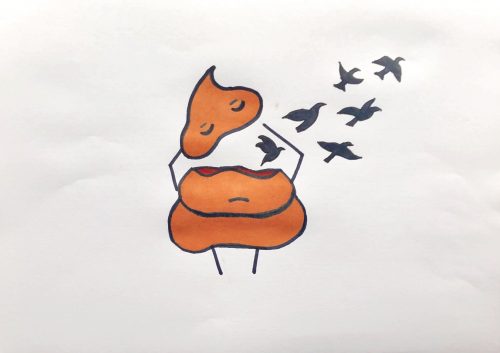
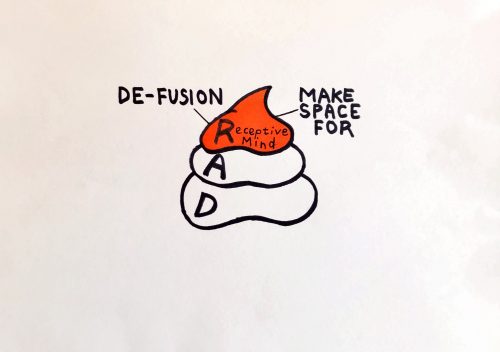
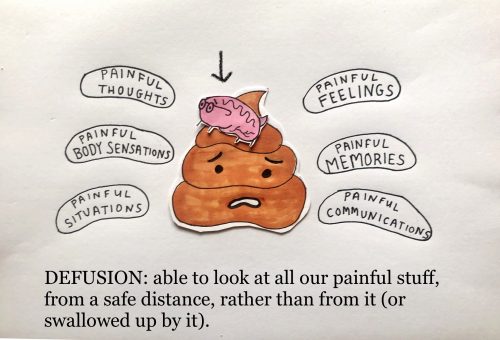
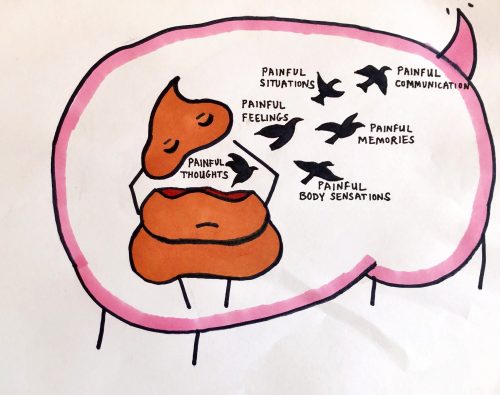
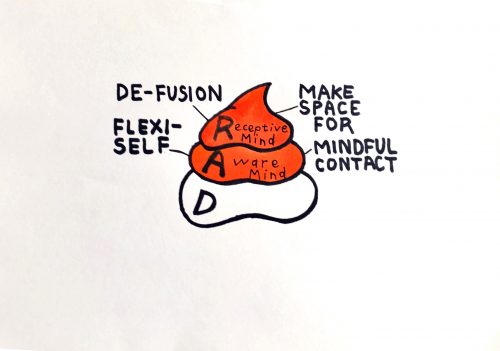
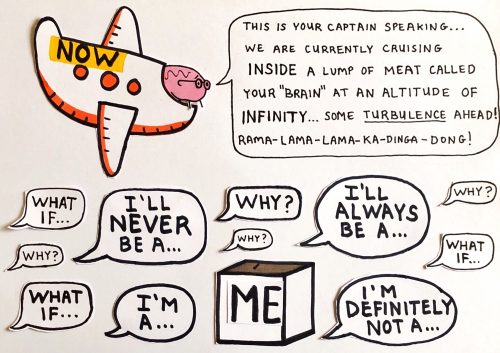
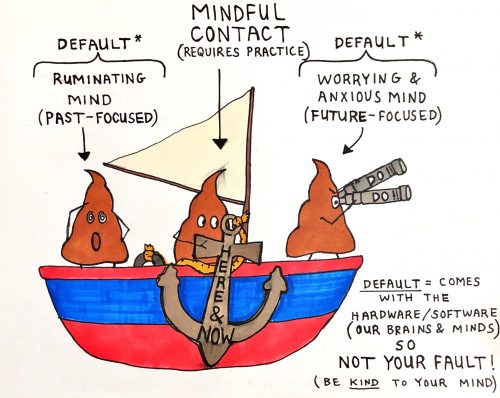
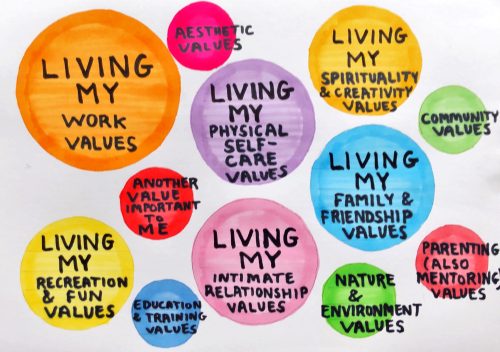
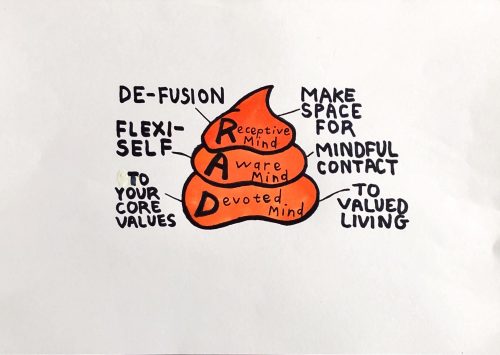
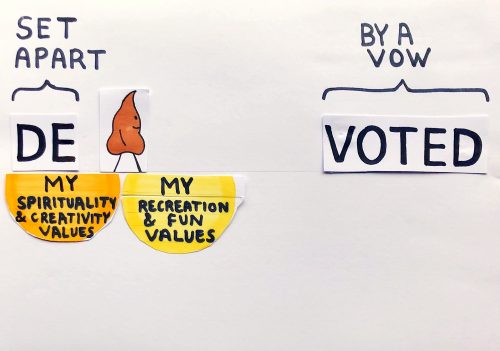
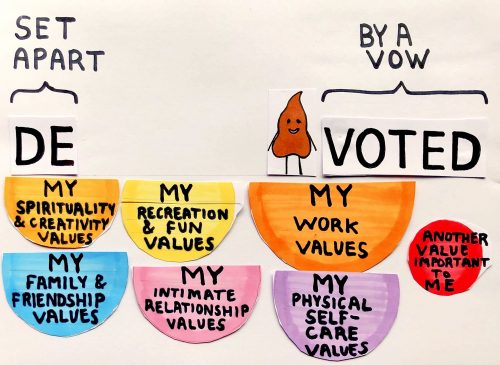


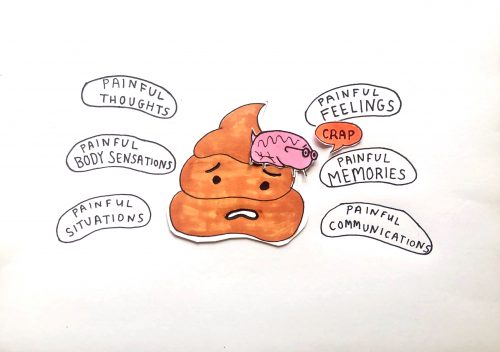
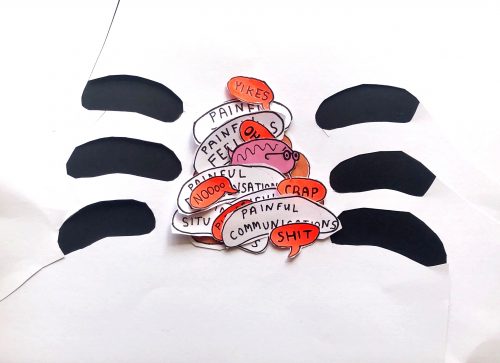
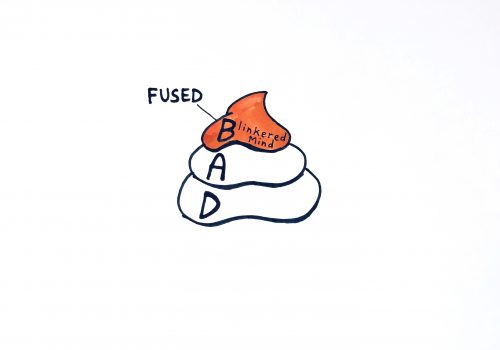 Also, because pain in any shape or form is so uh painful, our suffering Blinkered Minds will often try to avoid this pain in a very intuitive way.
Also, because pain in any shape or form is so uh painful, our suffering Blinkered Minds will often try to avoid this pain in a very intuitive way.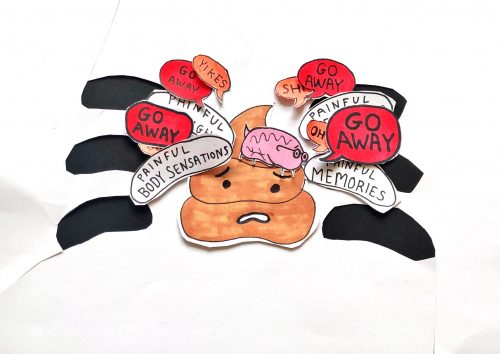
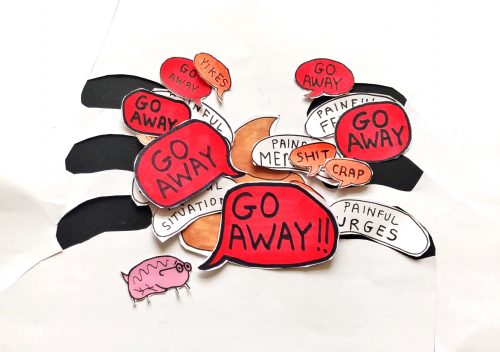
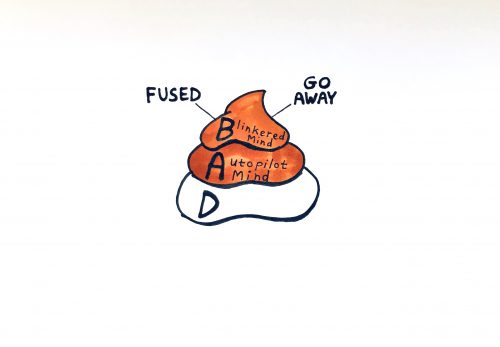
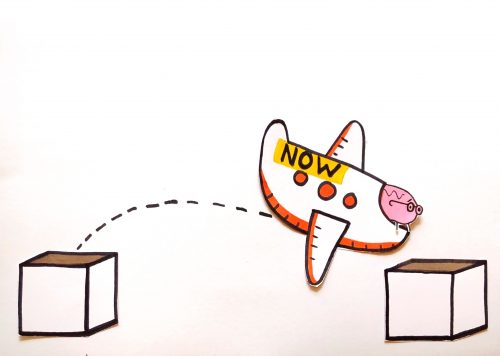
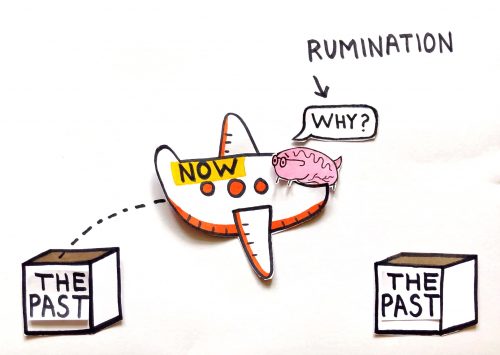
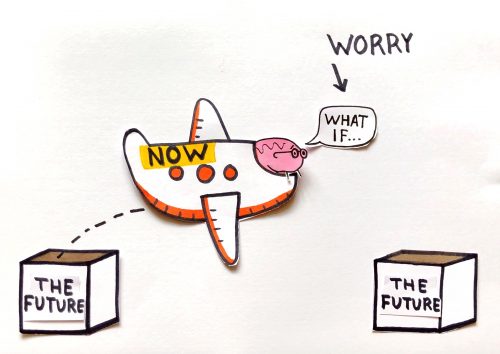
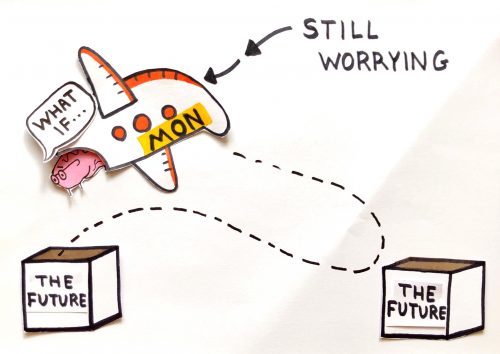
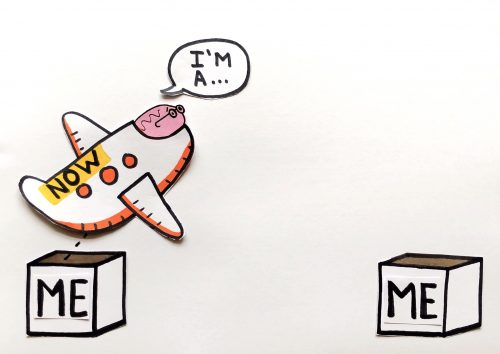
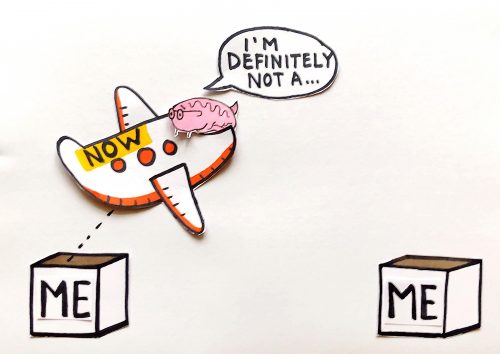
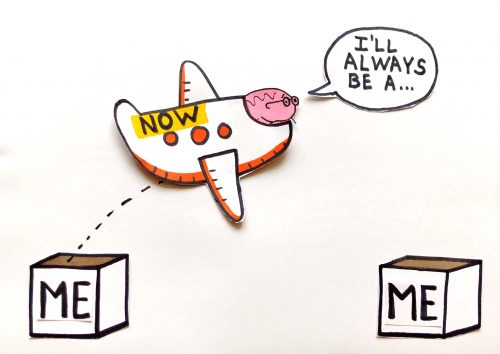
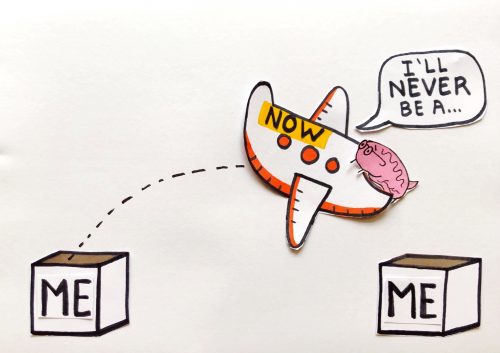
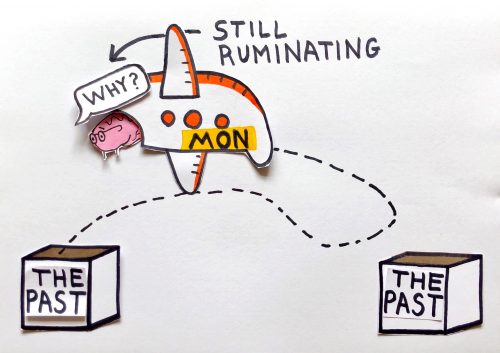
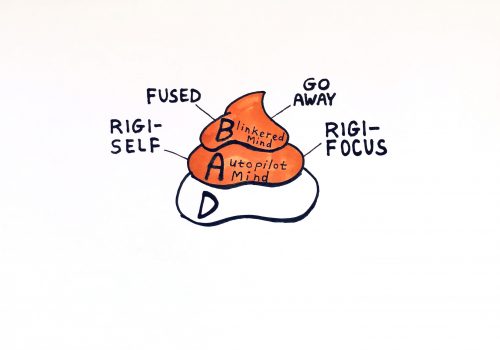
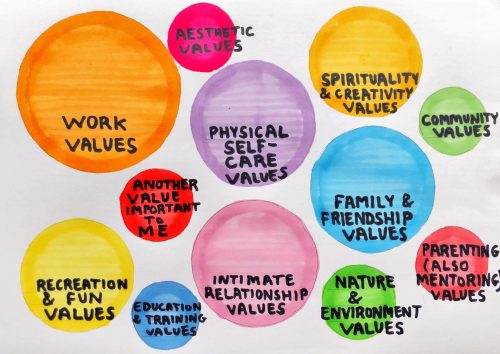
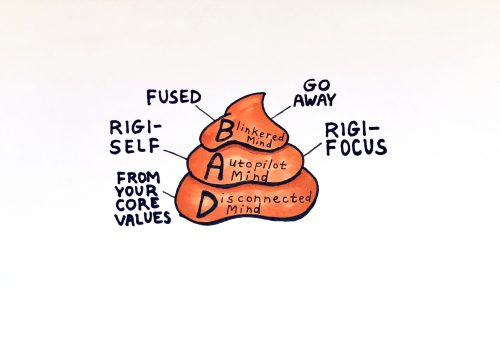
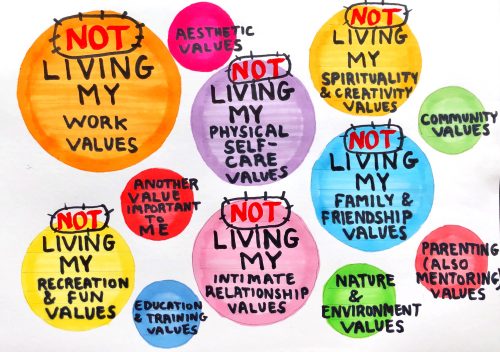
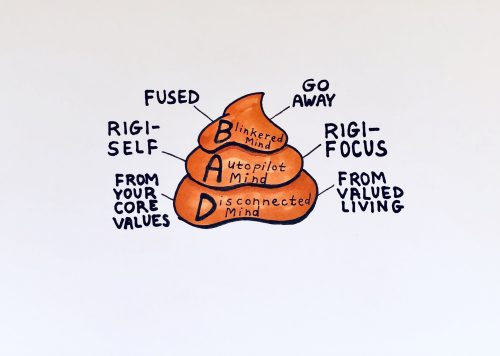

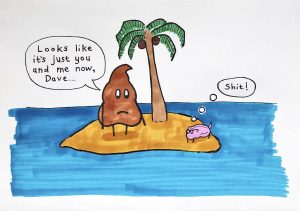
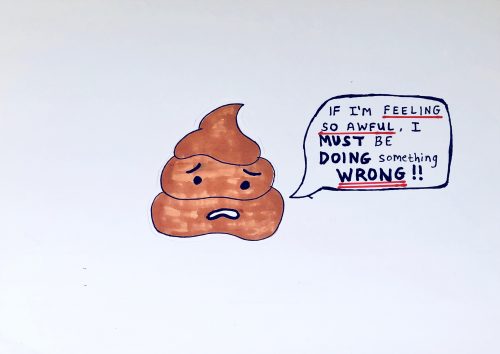
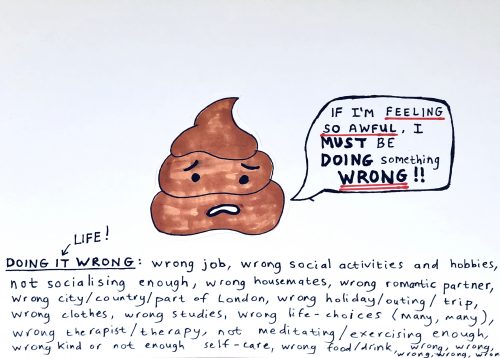
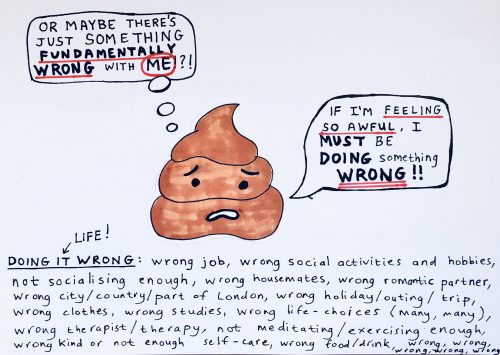
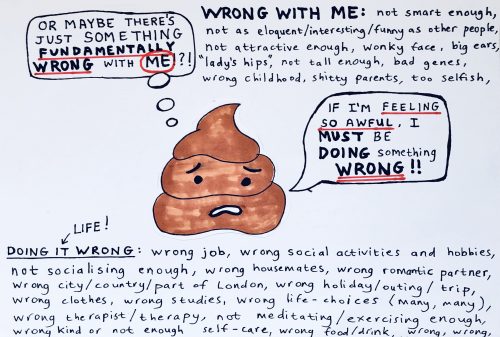



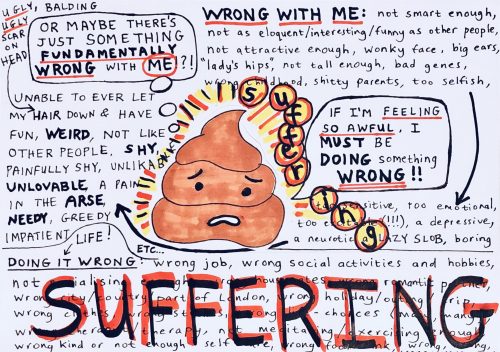
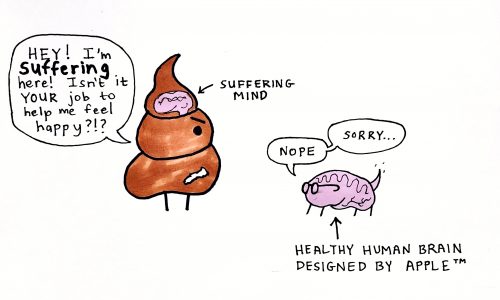 He’s right though.
He’s right though.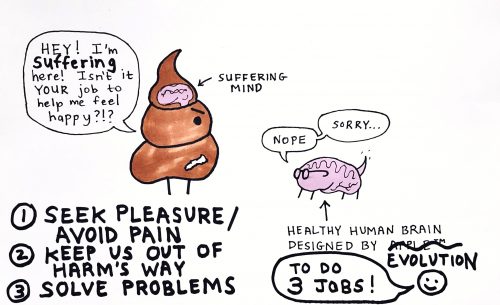
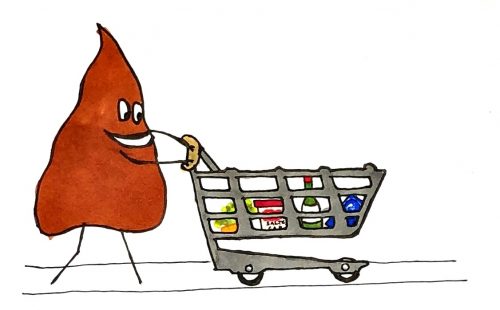 I’m also relieved to have seen and avoided my neighbour – the one I had an argument with with last week who I spotted walking down another aisle. Whew, and another dopamine hit of pleasure!
I’m also relieved to have seen and avoided my neighbour – the one I had an argument with with last week who I spotted walking down another aisle. Whew, and another dopamine hit of pleasure!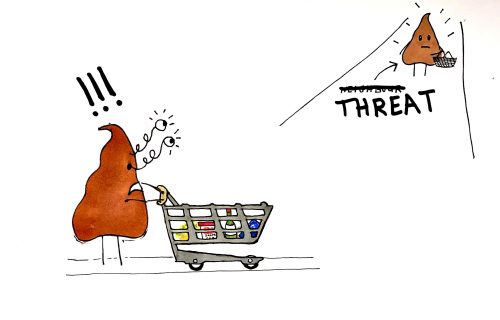 But maybe that evening I eat the whole tub of Hagen Daz as I am wont to do and drink most of the wine and feel sick and full of self-loathing.
But maybe that evening I eat the whole tub of Hagen Daz as I am wont to do and drink most of the wine and feel sick and full of self-loathing.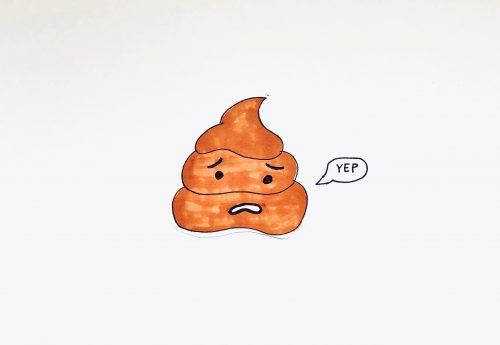
 In many ways, I love being the butt of someone’s joke, I love to be duped and fooled. Love magic tricks, especially of the Derren Brown variety that always reveal something profound to us about ourselves and others. As well as entertaining us in the process of fooling us.
In many ways, I love being the butt of someone’s joke, I love to be duped and fooled. Love magic tricks, especially of the Derren Brown variety that always reveal something profound to us about ourselves and others. As well as entertaining us in the process of fooling us. 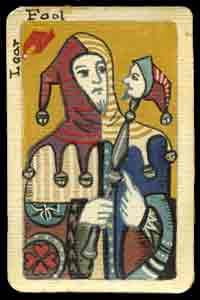 But the ultimate April Fool is the fool our minds make of us on a daily basis. Never out of pure malice – for how can a lump of meat, the brain, sitting between our ears bear malice towards us? Rather, as a function of their problem-solving, pleasure-seeking, pain-avoiding programming. Every time my mind tells me that the reason so-and-so didn’t respond to my text message is because a) they don’t care about me or what I’ve written to them, or b) they don’t fundamentally like me, or whatever other narrative they come up with, and I buy into that and suffer. Again:
But the ultimate April Fool is the fool our minds make of us on a daily basis. Never out of pure malice – for how can a lump of meat, the brain, sitting between our ears bear malice towards us? Rather, as a function of their problem-solving, pleasure-seeking, pain-avoiding programming. Every time my mind tells me that the reason so-and-so didn’t respond to my text message is because a) they don’t care about me or what I’ve written to them, or b) they don’t fundamentally like me, or whatever other narrative they come up with, and I buy into that and suffer. Again: 

 At the moment, I wake up to jackhammers and drills.
At the moment, I wake up to jackhammers and drills.  We need to skilfully differentiate between what is in our power and what is not. And that very differentiation happens to be the first thing we read about in a book of collected discourses issuing from the lips and the mind of a crippled, Roman slave named Epictetus who lived 2000 years ago. I like to imagine him as a slightly more philosophical and Latin-spouting version of
We need to skilfully differentiate between what is in our power and what is not. And that very differentiation happens to be the first thing we read about in a book of collected discourses issuing from the lips and the mind of a crippled, Roman slave named Epictetus who lived 2000 years ago. I like to imagine him as a slightly more philosophical and Latin-spouting version of 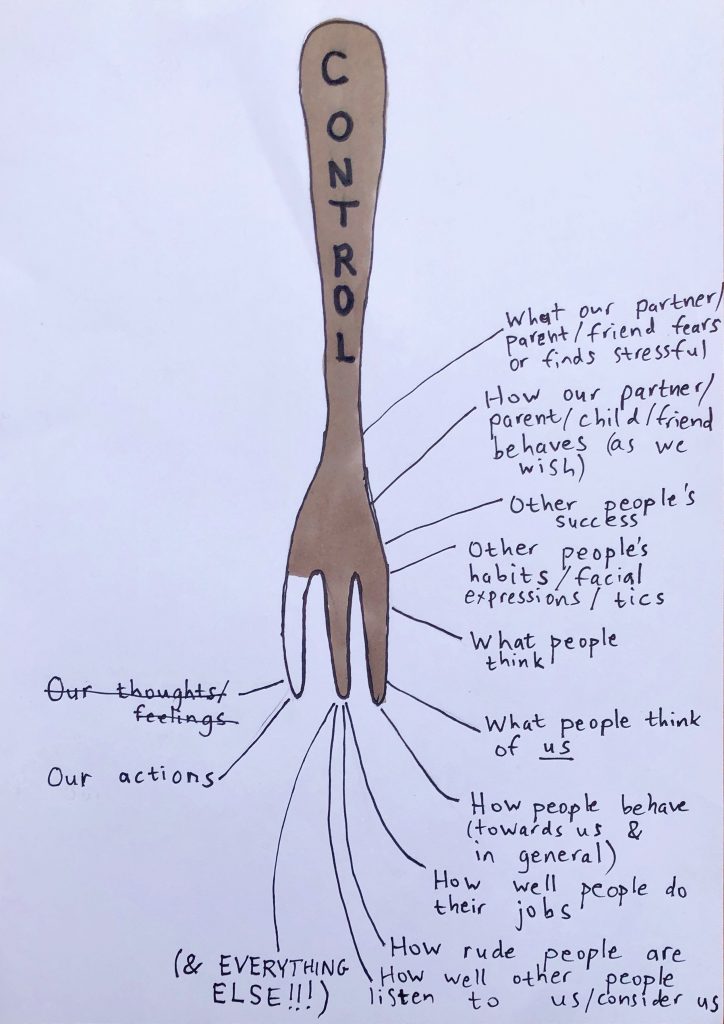

 We need to talk about ritual. The anthropologist Roy Rappaport writes: “Humanity is a species that lives and can only live in terms of meanings it itself must invent.” If this is so, ritual is fertile ground for creating meaning in our lives.
We need to talk about ritual. The anthropologist Roy Rappaport writes: “Humanity is a species that lives and can only live in terms of meanings it itself must invent.” If this is so, ritual is fertile ground for creating meaning in our lives. Every day, the hundreds of fronds that make up the lettuce in my raised beds launch into a Lactuca Sativa version of that 80s stadium anthem by Simple Minds:
Every day, the hundreds of fronds that make up the lettuce in my raised beds launch into a Lactuca Sativa version of that 80s stadium anthem by Simple Minds: As I
As I